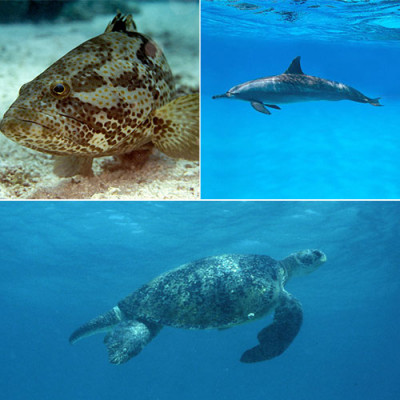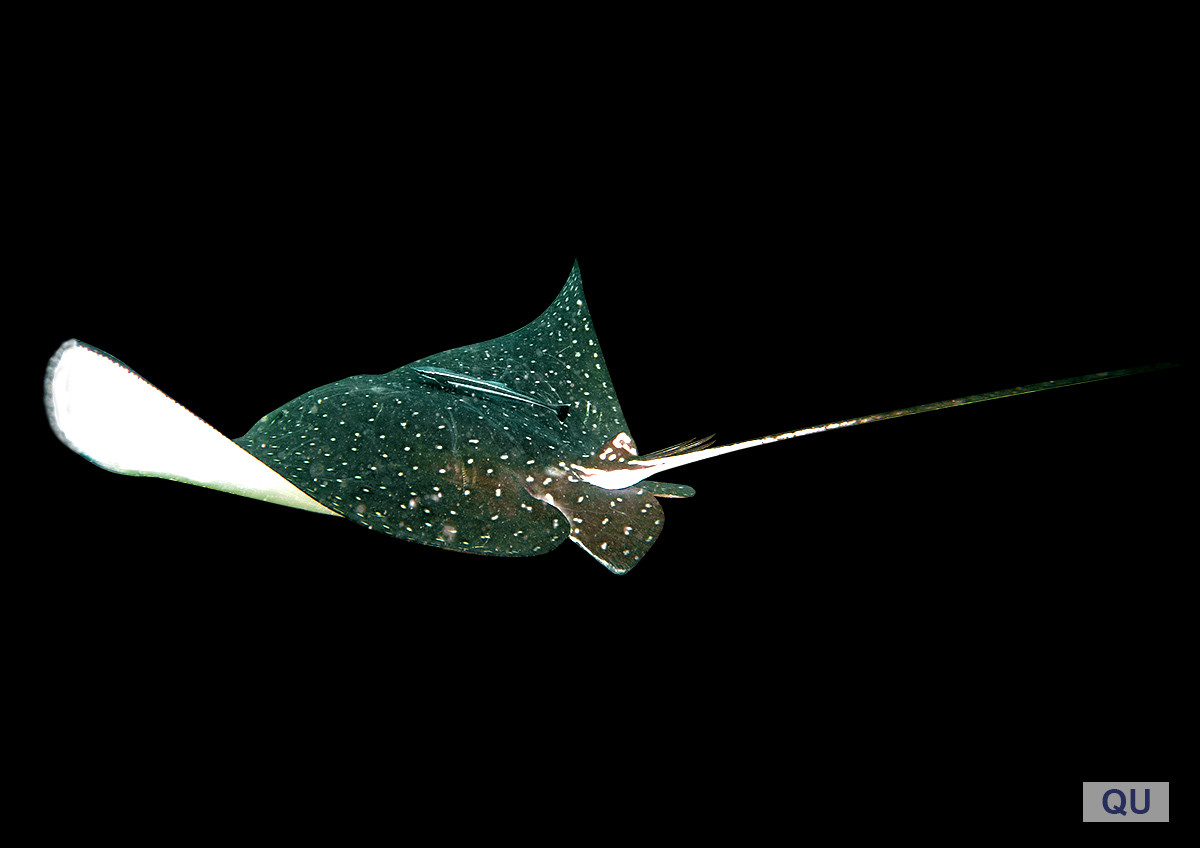Name: Ocellated Eagle Ray
Local name: Thwear Amer
Scientific name: Aetobatus ocellatus
Classification: Class: cartilaginous fishes; Order: stingrays; Family: eagle rays (Myliobatidae)
Synonym: Aetobatus narinari
Size: The disc of this large species reaches about 3 m in width, and the maximum weight is at least 200 kg.
Habitat:
This semipelagic species occurs mainly in coastal waters, over sand bottom, seagrass beds, or near coral assemblages, but it has also been observed offshore. It is may be found at depths of at least 80 m and occurs as solitary individuals, in pairs, or in groups. The Ocellated Eagle Ray mainly feeds on molluscs, but also on crustaceans and worms. It is ovoviviparous, producing young by means of eggs which hatch inside the parent’s body, and it gives birth to litters of 2 4 pups.
Distribution:
It is widely distributed throughout the tropical and subtropical Indo-Pacific.
Conservation status:
According to the IUCN Red List of Threatened Species the Ocellated Eagle Ray is Vulnerable (VU) and populations are declining. It is caught in drift and gill nets, but has no importance to fisheries.
Description:
The disc is much wider than long, each side being acutely pointed; its anterior margin is nearly straight, while the posterior margin forms a slight sinuous curve. The head is nearly round in cross-section with a very prominent rostral lobe. The tail varies from equal to disc length to three times longer, and has 1-5 venomous spines behind dorsal fin. The dorsal surface of the disk is dark grey or greenish grey to black, with numerous white spots or rings, while the ventral surface is white.








